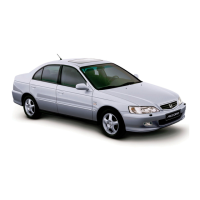
Do you have a question about the Honda 1998 Accord Sedan and is the answer not in the manual?
| Brand | Honda |
|---|---|
| Model | 1998 Accord Sedan |
| Category | Automobile |
| Language | English |
Key safety recommendations for occupants.
Overview of safety systems like cage, crush zones, airbags, and seat belts.
Guidelines for proper adult occupant positioning and restraint in seats.
Guidance on safely restraining infants and children using appropriate seats.
Procedure for securing vehicle doors for safety and security.
How to adjust front seats for optimal safety and airbag interaction.
Proper seat-back angle for seat belt effectiveness and safety.
How to position head restraints to prevent whiplash and crash injuries.
Instructions for correctly fastening and positioning seat belts.
Detailed guidance on fitting lap and shoulder belts correctly for maximum protection.
How to adjust the steering wheel for driver safety and airbag effectiveness.
Importance of upright posture for occupant safety during crashes.
Safety recommendations for pregnant women regarding seat belt use.
Precautions against sharing seat belts and using accessories.
Mandates for restraining infants and children in vehicles.
Guidelines on when to use child seats versus seat belts.
Recommendations for placing children in the back seat for safety.
Hazards of children in front seats due to passenger airbags.
Location and importance of passenger airbag warning labels.
Guidelines for seating and securing multiple children safely.
Criteria for choosing a safe and appropriate child seat.
Guidance on rear-facing vs. forward-facing seats for different age groups.
Summary of recommendations for child seat placement in the vehicle.
Detailed explanation of airbag hazards for children in various seating positions.
Step-by-step instructions for securing a child seat using a vehicle seat belt.
Where to safely place rear-facing infant seats in the vehicle.
Guidance on forward-facing seats and harness systems for small children.
How to check if a lap/shoulder belt fits a child properly.
When and how to use a booster seat for children too small for seat belts.
Overview of the seat belt system's parts, including reminders.
How to fasten, unfasten, and use the lap/shoulder belt.
How to check seat belt condition and details of Honda's warranty.
Components of the Supplemental Restraint System (SRS), including airbags and sensors.
Explanation of how airbags detect collisions and inflate.
Meaning of the SRS indicator light and when to seek service.
Information on SRS service, airbag replacement, and system maintenance.
Warnings about tampering with SRS components and airbag deployment hazards.
A visual guide to the location of various controls on the dashboard.
Detailed explanation of various indicator lights and the lamp check procedure.
Explanation of the vehicle's gauges like speedometer and fuel gauge.
Functions of steering column levers and dashboard controls.
Operation of cruise control and remote audio controls on the steering wheel.
Description of vehicle keys, immobilizer system, and door lock functions.
Programming the transmitter to operate home devices like garage doors.
Guide to adjusting front seats, including manual and power operations.
How to operate power windows using individual and master controls.
How to operate the moonroof tilt and slide functions.
Importance of clean and adjusted mirrors for visibility.
How to apply and release the parking brake.
How to set the clock and use the quick time setting feature.
How to open, close, and use the console compartment and its tray.
How to open, close, and use beverage holders, including safety warnings.
How to use and store the sun visor, including its extension.
How to open and close the sunglasses holder.
How to use the 12-volt accessory power socket and its limitations.
Modes of the ceiling light, spotlight, and courtesy lights.
Overview of the vehicle's heating and air conditioning system.
How the climate control system automatically adjusts for temperature.
Features of the standard AM/FM/Cassette stereo audio system.
How to turn on, adjust volume, and change bands (AM/FM) on the radio.
Methods for tuning to stations: TUNE, SEEK, SCAN, and Presets.
How to store favorite radio station frequencies in the preset buttons.
How to adjust speaker output strength and audio tone (treble/bass).
How to insert and play cassettes, including tape search functions.
How to operate the multi-disc CD changer and switch between it and the in-dash player.
How to insert and play CDs, including track numbers and functions.
Guidelines for handling, cleaning, and storing CDs to prevent damage.
Table of CD player error codes and troubleshooting steps.
Table of CD changer error codes and troubleshooting steps.
Features and operation of the optional cassette player.
How to maintain the cassette player and avoid contamination issues.
How to control audio functions via steering wheel buttons.
How the audio system disables itself and requires a code after battery disconnection.
How the security system protects the vehicle from theft and its alarm functions.
Guidelines for breaking in a new vehicle or engine for optimal performance.
Information on recommended unleaded gasoline, octane, and additives.
Steps for safely and correctly filling the fuel tank.
Step-by-step instructions on how to safely open the vehicle's hood.
How to check the engine oil level, including dipstick location and procedure.
How to check the coolant level in the reserve tank and radiator.
How vehicle condition and driving habits affect fuel mileage.
Importance of maintaining the vehicle for optimal operating condition.
Tips on driving moderately and using the highest gear for better fuel economy.
Information on accessories, modifications, and potential risks.
Warnings against modifying vehicle design, ride height, or steering system.
Overview of storage areas and importance of safe cargo stowage.
Maximum load capacity and how to calculate cargo weight.
Essential checks for windows, lights, tires, and fluid levels before driving.
Procedures for starting the engine, including manual and automatic transmissions.
How to operate the 5-speed manual transmission, including shifting.
How to operate the automatic transmission and its gear positions.
How to read the indicator showing the current transmission gear position.
How to shift into and out of Park and Reverse safely.
When to use D3 for towing or engine braking, and how to downshift for acceleration.
Maximum speeds for each gear position to avoid engine over-revving.
Proper use of the parking brake and parking on inclines.
Explanation of the braking system, including wear indicators.
Key safety advice regarding ABS, including following distance.
Driving techniques and precautions for rain, fog, and snow conditions.
Critical limits for trailer weight, tongue load, and GVWR for safe towing.
Importance of proper trailer hitch size, construction, and expert installation.
Safety advice for towing, including increased stopping distance and turning radius.
Explains why regular maintenance is crucial for safety and vehicle longevity.
Critical safety rules covering exhaust, hot parts, moving parts, fire, and eye protection.
Schedules for vehicle maintenance based on driving conditions and time/mileage.
Recommended maintenance tasks for normal driving conditions based on mileage/time.
Recommended maintenance tasks for severe driving conditions based on mileage/time.
Log pages for recording completed maintenance services for normal and severe schedules.
List of regular checks for fluids, tires, lights, and other items owners should perform.
Diagrams showing the location of engine oil, coolant, brake, and other fluid reservoirs.
Diagrams showing fluid reservoir locations for 6-cylinder models.
How to add engine oil and select the correct API service and viscosity grade.
Process and requirements for changing engine oil and filter, recommending professional service.
How to add engine coolant to the reserve tank and radiator.
Critical safety warning about removing the radiator cap only when the engine is cool.
Process for draining and refilling the cooling system, recommending professional service.
How to check the washer fluid level and use the correct fluid.
How to check the automatic transmission fluid level and add fluid if needed.
How to check the automatic transmission fluid level and add fluid if needed.
How to check the manual transmission fluid level and add if necessary.
How to check brake fluid level and the importance of using DOT 3 fluid.
How to check the clutch fluid level and its relationship to leaks.
How to check the power steering fluid level and potential leak indicators.
When to clean or replace the air cleaner element for optimal performance.
Steps for replacing the air cleaner element in 4-cylinder models.
Steps for replacing the air cleaner element in 6-cylinder models.
How to replace spark plugs in 4-cylinder engines, including cleaning and torque.
Details on spark plug specifications, gap, and correct torque values.
How to replace spark plugs in 6-cylinder engines, including cover removal.
Spark plug specifications, gap, and torque for 6-cylinder engines.
How to check battery condition via the test indicator window and terminal corrosion.
How to clean corroded terminals and reconnect/disconnect battery cables.
Warnings about charging the battery with cables connected and audio system code entry.
How to check wiper blade condition and instructions for replacing them.
How to maintain AC efficiency, including condenser cleaning and weekly operation.
When to replace the air conditioning filter based on mileage and driving conditions.
How to check drive belts for cracks/fraying and their proper tension.
When to replace timing and balancer belts based on mileage and conditions.
Importance of proper tire type, size, condition, and inflation for safe operation.
How to measure and check tire pressure, including cold vs. hot readings.
Recommended cold tire pressures for various models and speeds.
How to inspect tires for wear indicators, bumps, cuts, and cracks.
How often and in what pattern to rotate tires to increase life and distribute wear.
Guidelines for selecting replacement tires and wheels, and mixing tire types.
Specifications for vehicle wheels and tire sizes for different models.
Suitability of M+S tires and when to use snow tires or tire chains.
How to check the operation of vehicle exterior lights monthly for safety.
How to check headlight aim, especially when carrying loads or towing.
Step-by-step instructions for replacing headlight bulbs, including safety notices.
How to replace bulbs for front turn signals and side marker lights.
Steps for replacing parking light bulbs located under the headlight.
How to replace stop/taillight or turn signal bulbs located in the rear fenders.
How to replace taillight or back-up light bulbs located in the trunk lid.
How to replace the bulb for the high-mount brake light.
How to replace the bulb for the rear license plate light.
How to replace bulbs for interior lights like ceiling, door, vanity mirror, and spotlights.
How to replace the bulb for the trunk light.
Steps to prepare and store the vehicle indoors or outdoors to prevent deterioration.
How to wash, wax, and clean exterior surfaces like wheels and paint.
How and when to wax the vehicle for finish protection and shine.
How to clean and maintain interior surfaces like carpets, fabric, vinyl, and leather.
Factors causing corrosion and simple maintenance to prevent it.
Importance of using Genuine Honda parts and quality workmanship for body repairs.
Specific precautions when using the compact spare tire, including speed and traction limits.
Steps to prepare for changing a flat tire, including parking and safety measures.
How to find the correct jacking point on the vehicle's body.
How to use the jack and extension to raise the vehicle safely.
Steps for removing wheel nuts and the flat tire from the hub.
How to mount the spare tire and tighten wheel nuts, including torque specifications.
How to store the flat tire, jack, and tools securely after changing a tire.
Diagnosing starting issues based on starter motor sounds and checking fuses.
Troubleshooting steps for when the starter motor is slow or silent.
Troubleshooting steps when the starter works but the engine doesn't engage.
Step-by-step guide for safely jump starting a vehicle with a booster battery.
Correct procedure for connecting jumper cables to both batteries, including terminal order.
How to start the vehicle and safely disconnect jumper cables after successful jump start.
What to do immediately if the engine temperature gauge indicates overheating.
Steps to check coolant levels and radiator cap after overheating, emphasizing safety.
What the low oil pressure indicator means and immediate actions to take.
What the charging system indicator means and how to reduce electrical load if it activates.
What the malfunction indicator lamp signifies and potential causes like a loose fuel cap.
What the brake system indicator means and immediate actions if the pedal feels abnormal.
How to manually close the moonroof using the provided wrench if electric motor fails.
Information about fuses protecting electrical circuits and their locations in fuse boxes.
How to identify blown fuses and replace them using the fuse puller.
Description of acceptable towing equipment: flat-bed and wheel-lift.
Procedures for towing when front wheels must remain on the ground, including speed limits.
Where to find vehicle identification numbers like VIN and engine numbers.
Location of engine and transmission identification numbers on the vehicle.
Detailed specifications for vehicle dimensions, fluid capacities, and weight ratings.
Specifications related to lighting, battery, fuses, engine details, and wheel alignment.
Specifications for tire sizes, pressures, and wheel dimensions for different models.
How to understand tire size markings (e.g., P195/65R15 89H).
Chart explaining different tire speed rating symbols and their maximum safe speeds.
Explanation of DOT grading for treadwear, traction, and temperature performance.
What the temperature grades (A, B, C) mean regarding tire heat resistance.
Information on oxygenated fuels like ethanol and MTBE, and their effects on engines.
Advice on finding unleaded gasoline and potential issues with leaded gasoline abroad.
Explanation of systems controlling emissions like PCV, evaporative, exhaust, and catalytic converter.
Explanation of PGM-FI, Ignition Timing, EGR, and Catalytic Converter systems.
How the catalytic converter works, its operating temperature, and maintenance.
Steps to take when dissatisfied with dealership service and how to contact Zone Offices.
Key vehicle and purchase details required when contacting Honda for assistance.
Details on New Vehicle Limited Warranty and Emissions Control System Warranties.
Information on specific limited warranties for seat belts, rust, accessories, parts, battery, and muffler.
Procedure for reporting vehicle safety defects to the National Highway Traffic Safety Administration.
Recommended gasoline type and fuel tank capacity.
Engine oil type, viscosity, and oil change recommendations.
Recommended fluids for automatic and manual transmissions, including capacities.
Recommended cold tire pressures for different vehicle models.

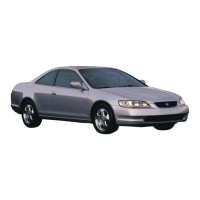
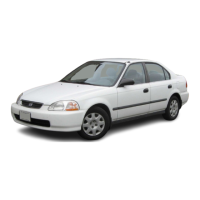


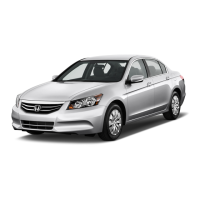



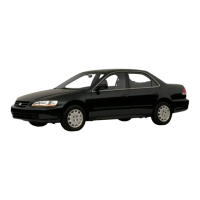
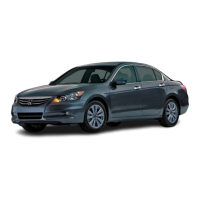
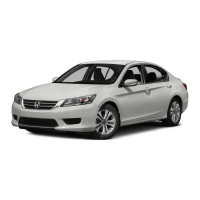
